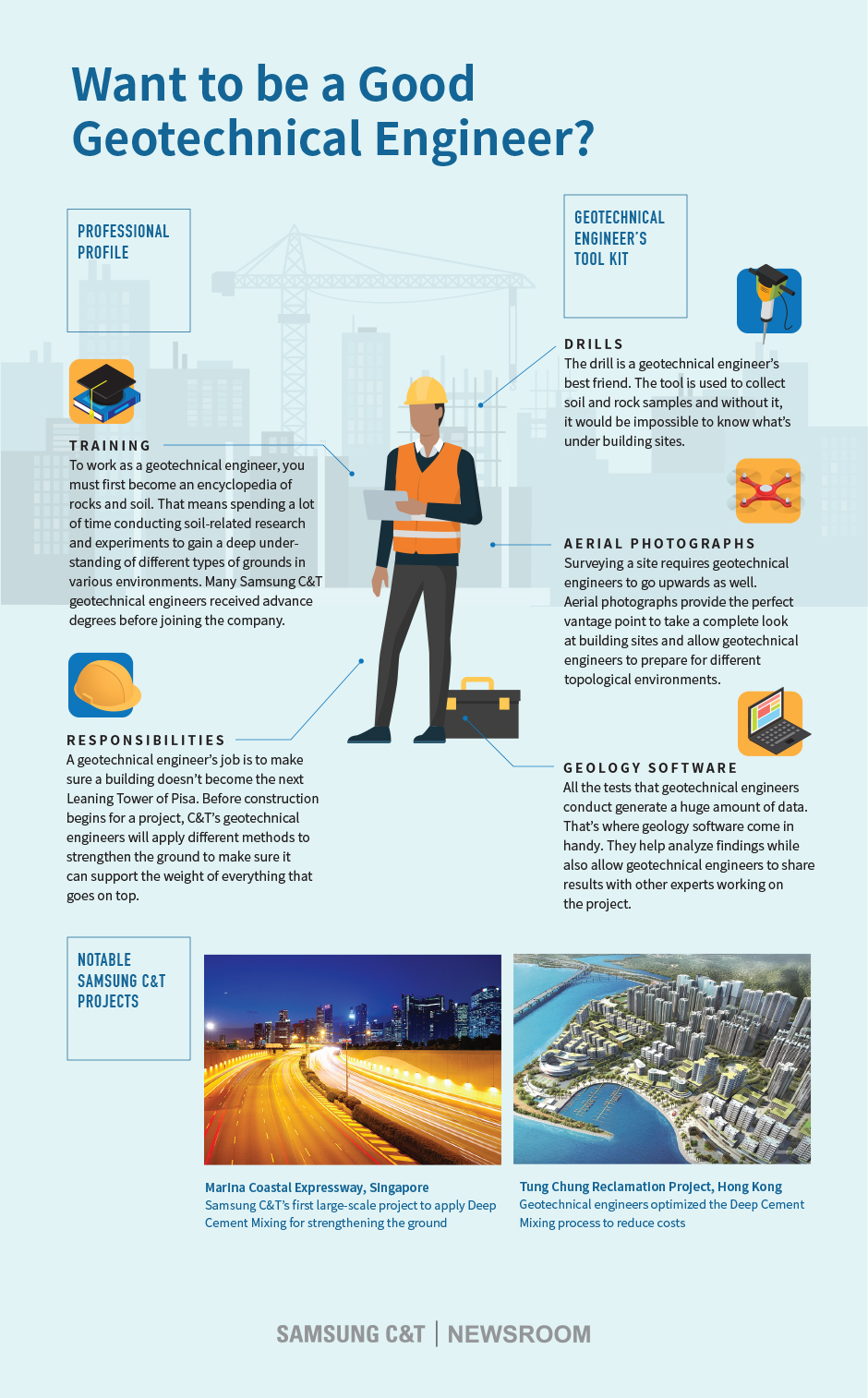The smart Trick of Geotheta That Nobody is Discussing
The smart Trick of Geotheta That Nobody is Discussing
Blog Article
The Ultimate Guide To Geotheta
Table of ContentsLittle Known Questions About Geotheta.Geotheta Things To Know Before You BuyThings about GeothetaWhat Does Geotheta Do?
They collaborate with civil designers, architectural engineers, designers, and other specialists to incorporate geotechnical considerations into the general task style and building procedure. This requires effective synergy, coordination, and interaction to make sure that the geotechnical aspects straighten with the project goals and fulfill governing requirements.Mining & Products Engineering: Principles of drilling, infiltration rates, and elements influencing the option of drilling approach. Qualities of explosives, shooting systems and blast patterns. Blowing up techniques in surface area and underground operations. Special blowing up methods at excavation borders. Resonance and sound control. Mechanical and constant approaches to fragmentation, including longwall shearing and fullface boring.
Modelling of piece and particle size circulations; comminution as a transfer function. Comminution innovation: crushing, grinding, size classification. Integrated evaluation of fragmentation and comminution operations. Provided by: Mining & Products Design.
6 Easy Facts About Geotheta Described
Bachelor's degree programs in civil, geotechnical, geological, and environmental engineering commonly last 4 years and include basic education programs in English, social scientific research, and the liberal arts, as well as courses in advanced mathematics, structural geology, and liquid mineralogy. (https://ameblo.jp/geotheta/entry-12862281966.html)
Geotechnical engineering involves the evaluation of the dirt and rock problems at a particular site, and their effects for the growth of that site. As the majority of frameworks depend on the ground for assistance, it is without surprise that an in-depth understanding of the ground problems, and the viability of foundation systems, are essential to the lasting security and performance of the structure or framework.
Specialising in the investigation of geological formations and ground practices, geotechnical designers perform scientific investigations and testing to comprehend the effect these geological developments might carry the layout and construction of building, civil and infrastructure projects. This knowledge is important for the layout and building and construction of structures, roadways, passages, dams, bridges, and water and sewer systems.
The geotechnical team at Douglas Allies consistently seek advice from with engineers, layout designers, programmers, and builders to make recommendations on design and growth proposals to ensure that the constructed frameworks are appropriately developed for the ground conditions. For example, the design of footing systems needs to consider the weight of the framework, the capacity of the ground to sustain that weight along with motion tolerances and reliable building and construction.
A Biased View of Geotheta
This job is considerably streamlined by the use of our Douglas Map geospatial platform which makes this information readily accessible in a simple to make use of web internet browser interface. A geotechnical engineer will certainly route the boring of boreholes and test pits to gather soil and various other examples, and also analyze surface functions and ground exposures to form a geotechnical design of the subsurface conditions.
Depending on the job kind and ground problems experienced, lab screening may to name a few things evaluate stamina, compressibility, reactivity and/or permeability of dirt and rock samples. After this data is collected and collated, the results are utilized for a geotechnical version of the site, which is usually provided as areas across the website.

A geotechnical investigation by nature can just assess the ground conditions at the places pierced or dug deep into. All-natural variants in soil and rock problems can occur throughout a site and between test locations. It is therefore excellent method that the geotechnical designer be preserved throughout building of the job to give on-site verification that the ground conditions experienced follow the assumptions and suggestions given in the geotechnical examination record.
The Single Strategy To Use For Geotheta
Geotechnical designers utilize their in-depth knowledge of soil and rock to evaluate risk and resolve problems on varied facilities projectsGeotechnical engineering is a specialist branch of civil engineering which looks at the practices of planet materials and the application of dirt and rock technicians. Consulting Engineer. As a geotechnical designer, you will certainly examine the physical, mechanical and chemical residential properties of soil and rock in order to develop structures, keeping structures and earthworks
Geotechnical engineering is closely connected to and overlaps with, both design geology and ground engineering - https://geotheta.wordpress.com/2024/08/02/unlocking-the-secrets-of-geotechnical-engineers-the-geotheta-advantage/. It's feasible to specialise in geotechnics or benefit a geotechnical firm however be called an engineering geologist or a ground engineer. As a geotechnical engineer, you'll need to: develop and maintain relationships with customers and various other experts associated with the site, throughout each projectmaintain safety criteria on site bear in mind cost effects when you make recommendationsstudy geological maps and aerial pictures from a variety of sources and from different time periodsexamine building plans to see just how practical they are based on your understanding of the siteinvestigate threats or geological risks for the sitesearch for environmentally delicate functions, such as land fill begin to develop valid and interpretive ground modelsplan area investigationsdrill and analyse examples of bedrock, soil, groundwater and added materials manage various other specialists on sitesolve technological concerns as they emerge, such as unexpected frameworks at drill sitesmonitor problems throughout and after construction to make certain structures are steady in the short and lengthy termadding data accumulated on site to your initial researchcreating geotechnical computations, drawings, and two or three-dimensional computer system models analyzing the datamaking recommendations concerning the proposed use the website

Report this page